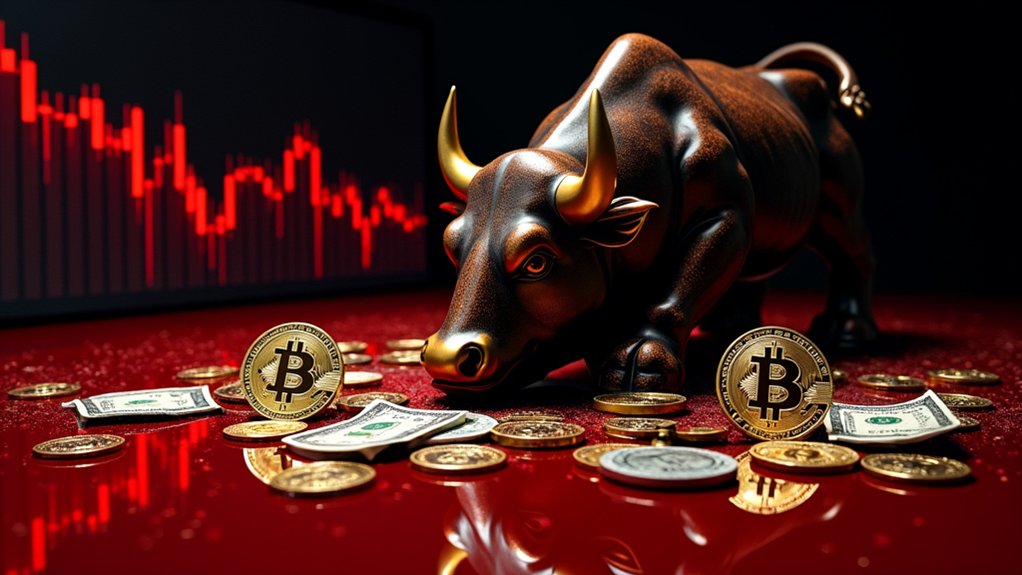Nearly every Bitcoin investor is facing a sobering reality as the digital currency posted a 12.7% loss in Q1 2025—its worst first-quarter performance since 2018. Prices tumbled to $81,481 by March’s end, with a painful 5.45% drop in the final week alone. Not exactly the moon shot everyone was banking on.
A prominent crypto analyst is now ringing alarm bells that Bitcoin could crash below $60,000 despite all the bullish chatter filling social media feeds. Sure, Bitcoin’s always been a rollercoaster, but this warning hits different. The recent price action—bouncing between $89,000 and $98,000 like a ping-pong ball—has even seasoned traders reaching for antacids. Many experts suggest embracing volatility as a necessary feature that provides an edge over less committed investors.
Bears may have the wheel as Bitcoin could plummet below $60K, despite the moonboy echo chamber’s constant reassurances.
Institutional players were supposed to be Bitcoin’s stability saviors. Fat chance. While fair-value accounting mandates introduced in January have technically improved Bitcoin’s legitimacy, the promised flood of pension fund money hasn’t materialized as expected. Turns out those suits are just as skittish as the rest of us.
The looming U.S. recession threat isn’t helping either. With economists putting the odds at 40% for 2025, retail investors are getting spooked. When regular folks feel the economic pinch, guess what gets sold first? Not the groceries.
Technical problems are piling on too. Bitcoin’s developer communication channels recently faced disruptions from bot attacks, highlighting vulnerabilities nobody wants to talk about. Hard to maintain confidence when the builders can’t even chat without interference.
Remember past corrections? Some reached 62% losses. By comparison, today’s dip looks like a minor hiccup. But context doesn’t pay the bills for panic sellers who bought the top. The chart patterns showing lower high points and consistently declining price levels suggest we may be entering a classic bear market cycle.
Global trade wars and those new tariffs aren’t exactly bullish catalysts either. When economies contract, speculative assets feel the pressure first. This risk is amplified by J.P. Morgan’s warning of a 40% chance of recession due to Trump’s proposed tariff policies, which could trigger widespread economic contraction.





